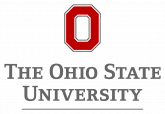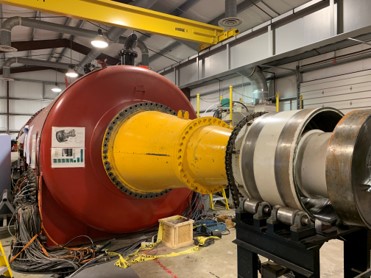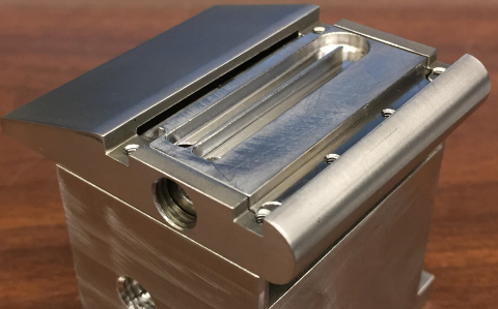Innovation
The Advanced Turbine Cooling Project investigated methods of improving the efficiency and performance of jet engines and gas turbine engines through improved cooling technologies.
Objectives
The goal of the partnership among The Ohio State University, University of Cincinnati, Air Force Institute of Technology, Miami University, and Honeywell International is to develop parts of the technology necessary for NASA to reach their N+3 efficiency goals and the Air Force to achieve the goals laid out in the Advanced Turbine Technologies for Affordable Mission (ATTAM) initiative. In both cases, there is an interest in achieving higher turbine inlet temperatures in smaller core engines by improving turbine cooling designs.
Background
Experiments and high-fidelity computations were performed to explore how to better optimize these cooling configurations. New experimental techniques, such as the use of a high-speed infrared camera to measure the thermal load on a moving turbine blade, were developed and demonstrated, opening the door to a range of new research opportunities. Together, these predictions and data sets will help shape future industrial design practices as well as the next generation of engines to hit the market.
Commercial Goal
This project has benefited the state of Ohio in a variety of ways. In addition to producing valuable research insights, the project resulted in the training of 8 new graduate students for employment in Ohio, created 3 new full-time jobs, and brought in $9M in additional research contracts for the partner institutions.
Much of the work on this project was performed in close collaboration with Honeywell International and using Honeywell proprietary geometry. These results will be fed into the design of future Honeywell engines, providing a competitive advantage that will result in increased engine sales. A significant portion of each engine is manufactured in the state of Ohio. In addition, the experimental and computational techniques developed in the project can be applied to future research, bringing additional revenue to the universities in the partnership.
Beyond the technical and commercial outcomes of this project, the OFRN approach has been important in strengthening relationships among researchers in the state. It provided an excellent opportunity to build closer connections to the AFRL and NASA, with engineers from both institutions participating in onsite design reviews. It also helped maintain a strong relationship with Honeywell despite the retirement of a key executive supporter within the company. Lastly, the project promoted a much greater awareness of useful capabilities for future collaborations among the partner universities.








